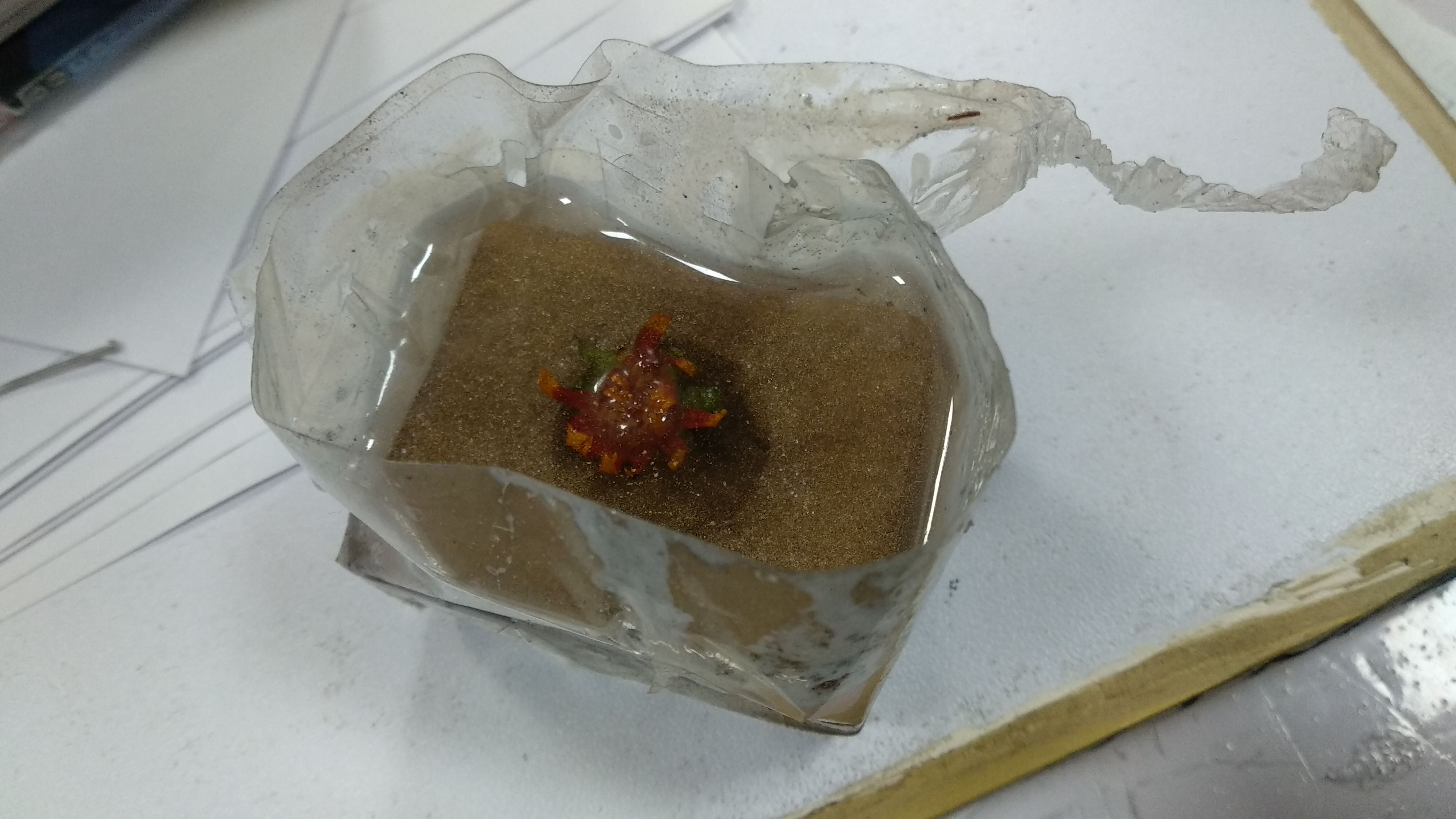Assignment 11
Molding & Casting
Safety tips
| Tips | Detail |
|---|---|
| Proper ventilation | Make sure there is fresh air entering a room when working with resin. Open a window or use a fan if necessary. |
| Wear disposable gloves | I prefer nitrile gloves since they are less likely to react with the resin. If you have super sensitive skin, you might consider coating your hands with a barrier cream first. |
| Wear protective clothing | Resin can soak through clothing and irritate your skin. Resin drips will also not come out of clothing. |
| Designate items as resin only | Silicone baking molds can make great resin molds too, but once used for resin, they should not be used for food again. The same goes for mixing containers and utensils. |
| Wear a respirator | Some resins, including polyester and polyurethane, can be very dangerous. Wear a NIOSH approved respirator for fumes and make sure it fits properly. |
| Wear safety goggles | If a resin requires respirator use, you need to wear safety glasses as well. You should also wear these if you are sanding the resin or using power tools. |
| Clean up spills immediately | While it’s inconvenient to stop in the middle of a project to clean up a resin spill, it’s better than getting some on yourself later or having an unknowing person get it on him or herself. |
| When sanding resin, wear a particle mask or respirator | For light sanding, a particle mask is probably sufficient, but if you’re using a belt sander, grinder or buffing wheel, a respirator may be more appropriate since the resin will be more aerosolized. |
| Exercise care with solvents | If cleaning up a resin spill on the skin, don’t use a ketone or chlorinated based product. This will only put the resin deeper into your skin. Use only soap and water. |
Material Used
| Product | Picture | Detail |
|---|---|---|
| wood piece | .jpg) |
wood piece to make a base for casting. |
| weighing machine |  |
To weigh different material in miligram. |
| Resin |  |
A solid or liquid synthetic organic polymer used as the basis of plastics, adhesives, varnishes, or other products. |
| Hardner |  |
A hardener is used simply to increase the resilience of the mixture once it sets. In other mixtures a hardener is used as a curing component. |
| Silicon Rubber RTV |  |
Silicone rubber which is heat, oil and fuel-resistant is used for molding into a variety of durable parts used in automobile. There are sealants and adhesives, materials for noise, specialty lubricants, materials for vibration, harshness, automotive polishes made by silicone rubber. |
| Curing agent |  |
Curing agent is the substance reacting with the primary film-forming matter of coatings and making it solidify to form the film. |
Casting
Resin casting is a method of plastic casting where a mold is filled with a liquid synthetic resin, which then hardens. It is primarily used for small-scale production like industrial prototypes and dentistry.
Process
Step 1: Take wood piece make whole in it to place something inside


Step 2: Use cellotap to cover its edge, so that when mixture is poured it will stay in place.

Step 3: Mix epoxy resin and hardener in ratio of 2:1
Step 4: Mix the mixture well so that it is in proper consistency
Step 5: Take the wood piece place flower inside
Step 6: Pour the mixture in the covered part
Step 7: Place it on the balanced surface
Step 8: keep it as it is for 24 hour to dry.
Output

Learning
We can make different jewellery parts, show piece. Different furniture parts like top of table
Things to take care of:
Wear handgloves while applying resin-hardener.
While measuring the chemical take care of the proportions.
Clear the place after use
Dont keep extra material in bowl it will harden better use it somewhere.